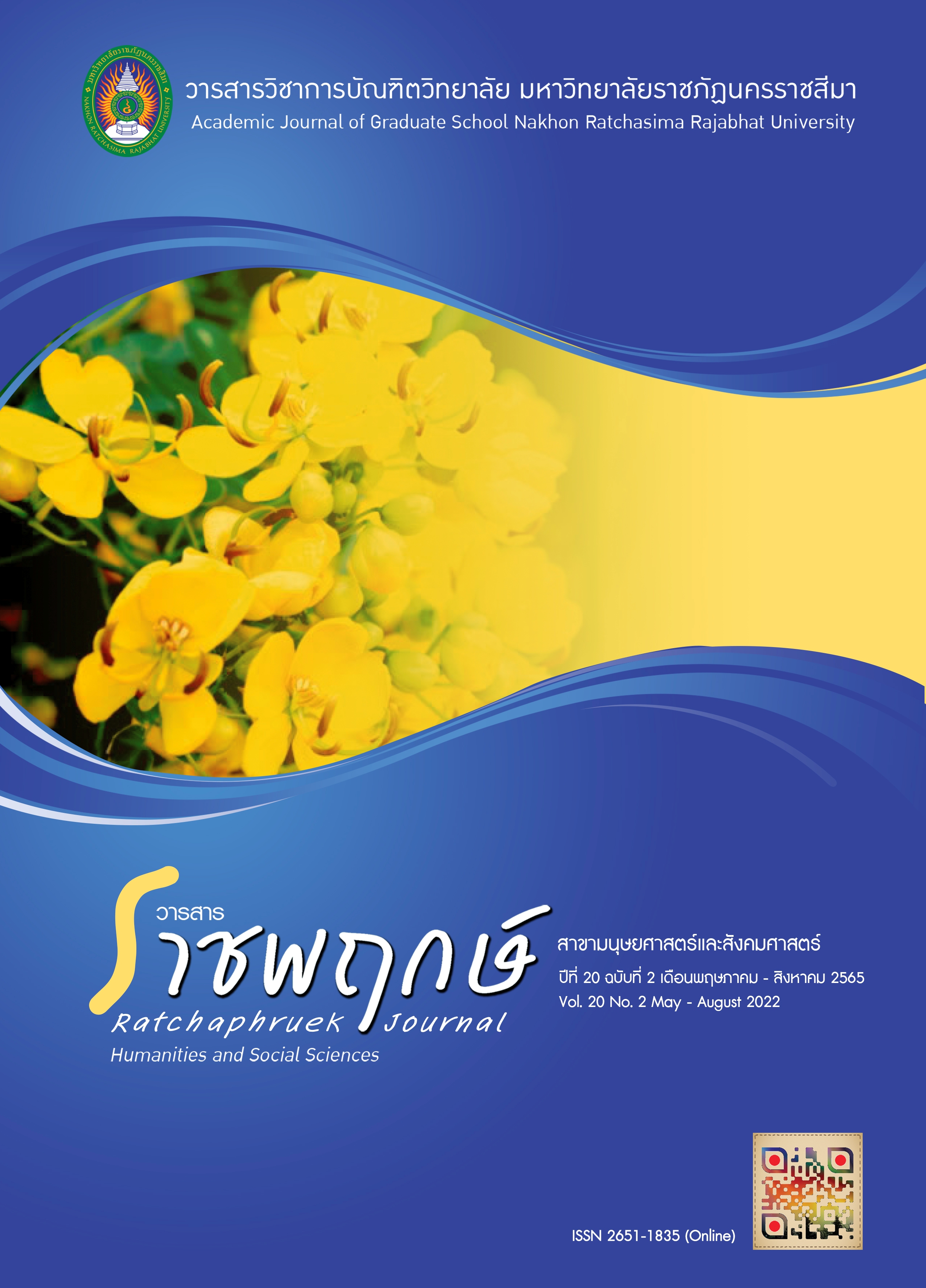The Effects of Intrinsic Motivation Encouragement Activities on Goal Setting to Learn of Secondary Education Grade 1 Students
Main Article Content
Abstract
The objectives of this research were: 1) To compare the students' learning goal setting before and after; and 2) To compare the goal setting in the study between the experimental group and the control group. The population were the Mathayomsuksa 1 students, semester 2, academic year 2020, totaling 5 schools, total 5 classrooms, 76 students. The sample group were 41 students from 2 schools which were randomly selected by classroom drawing, and students voluntarily participate in research. Then, the classrooms were drawn 19 students from Bansila Ruamsamakkee to be an experimental group, and 22 from BanHuai Chorakhe School was a control group. The research instrument consisted of 8 internal motivation promotion activities plans, and a learning goal setting questionnaire. Data were analyzed by t-test. The research results were found that: after the experiment, the goal setting to learn scores of the experimental group’s had were statistically higher than pretest at the .o5 level of significance, and had goal setting to learn posttest scores statistically higher than control group at the .o5 level of significance.
Article Details

This work is licensed under a Creative Commons Attribution-NonCommercial-NoDerivatives 4.0 International License.
References
ประยุทธ ไทยธานี. (2555). แรงจูงใจในการเรียน. นครราชสีมา: โครงการตำราเฉลิมพระเกียรติ 60 พรรษา สมเด็จพระบรมโอรสาธิราชฯ สยามมกุฎราชกุมาร, มหาวิทยาลัยราชภัฏกลุ่มภาคตะวันออกเฉียงเหนือ.
มาลัย พันธ์กกค้อ. (2558). ผลของโปรแกรมส่งเสริมการรับรู้ความสามารถแห่งตนที่มีต่อแรงจูงใจภายในในการเรียนรู้ของนักเรียนชั้นมัธยมศึกษาปีที่ 3 โรงเรียนสมเด็จพระธีรญาณมุนี จังหวัดนครราชสีมา (วิทยานิพนธ์มหาบัณฑิต, มหาวิทยาลัยราชภัฏนครราชสีมา).
รดารัตน์ ยุมิมัย. (2562). ผลของการฝึกอบรมเชิงจิตวิทยาที่มีต่อการตั้งเป้าหมายในการเรียนของนักเรียนชั้นมัธยมศึกษาปีที่ 3 (วิทยานิพนธ์มหาบัณฑิต, มหาวิทยาลัยราชภัฏนครราชสีมา).
อารี พันธ์มณี. (2546). จิตวิทยาสร้างสรรค์การเรียนการสอน. กรุงเทพฯ: ใยไหม.
Ames, C. (1992). Achievement goals and classroom motivational climant. In Meece, J. and D. Schunk, (Eds).Students perceptions in the classroom (pp. 327-348). Hilledle, NJ: Erlbaum.
Bandura, A. (1986). Social foundations of though and action: A social cognitive theory. Englewood Cliffs, NJ: Prentice-Hall.
Csikszentmihalyi, M. (1997). Creativity: Flow and the psychology of discovery and invention. New York: Harper Perennial.
Deci, E. L., Koestner, R. & Ryan, R. M. (1999). A Meta-Analysis Review of Experiments Examining the Effects of Extrinsic Rewards on Intrinsic Motivation. Psychological Bulletin, 125(6), pp. 627-668.
Dweck, C. S. & Elliott, E. S. (1983). Achievement Motivation. In P. H. Mussen (Gen. Ed.), & E. M. Hetherington (Ed.), Handbook of Child Psychology (pp. 643-691). New York: Wiley.
Locke, E. A. & Latham, G. P. (1990). A Theory of Goal Setting & Task Performance. New Jersey: Prentice Hall.
White, R. W. (1959). Motivation Reconsidered: The Concept of Competence. Psychological Review, 66(5), pp. 297-333.


